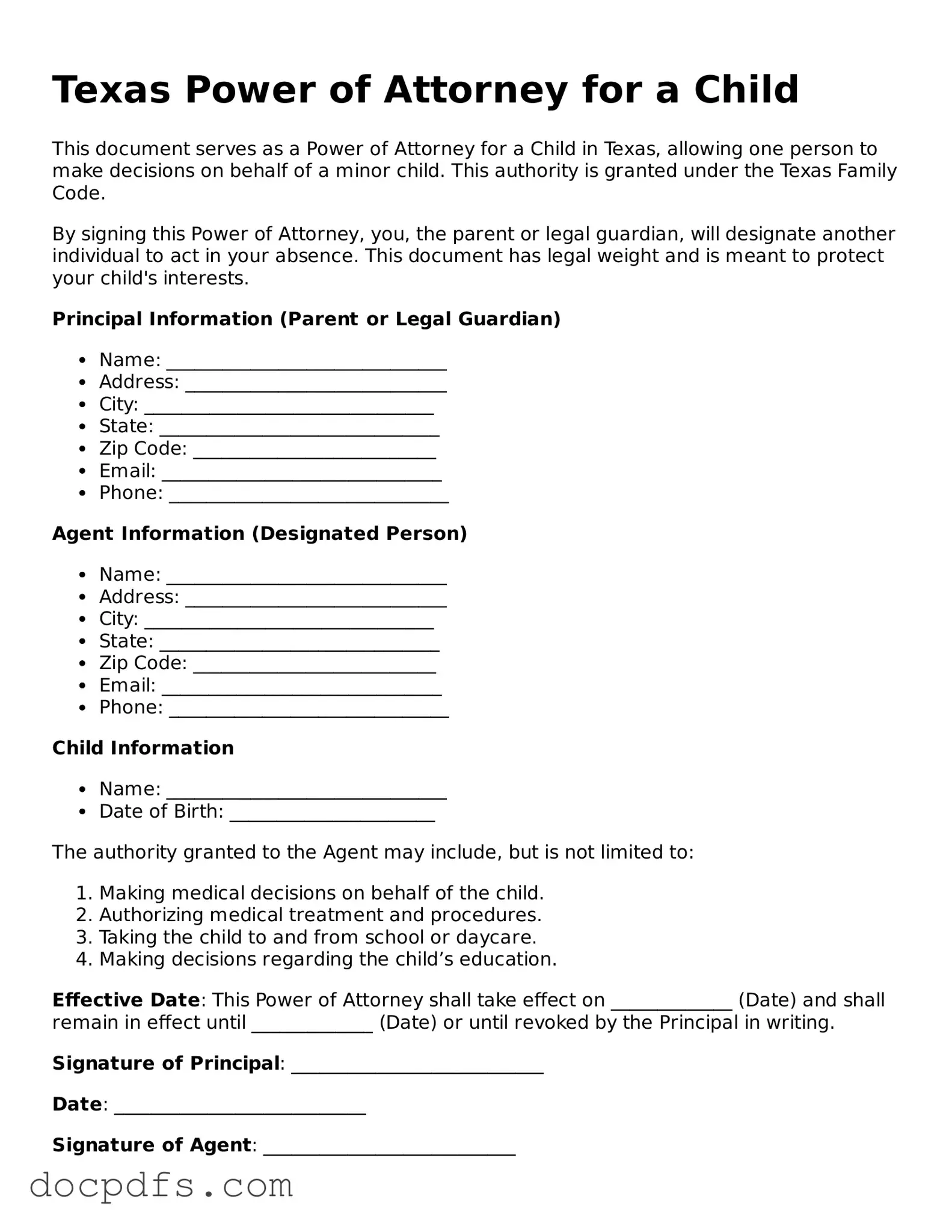What is a Texas Power of Attorney for a Child?
The Texas Power of Attorney for a Child form allows a parent or legal guardian to designate another adult to make decisions on behalf of their child. This can include decisions related to education, healthcare, and general welfare while the parent is unavailable.
Any adult can be designated as an agent, as long as they are trustworthy and capable of making decisions in the child's best interest. This could be a relative, family friend, or neighbor.
This form is particularly useful in situations where a parent will be away for an extended period, such as during military deployment, travel, or hospitalization. It ensures that the child’s needs are met in the parent’s absence.
How long is the Power of Attorney valid?
The Texas Power of Attorney for a Child remains effective until the specified expiration date, or until the parent revokes it. It can also automatically terminate if the parent returns home or if the child reaches adulthood.
Yes, the form must be signed in the presence of a notary public to be legally binding. This adds an extra layer of validation and helps prevent misuse.
Can I revoke the Power of Attorney once it is established?
Absolutely. A parent can revoke the Power of Attorney at any time by providing written notice to the agent and any relevant parties. It’s a good practice to keep a record of the revocation.
What decisions can the agent make on behalf of my child?
The agent can make a variety of decisions, including:
-
Medical decisions and access to healthcare
-
Educational decisions, such as school enrollment
-
General welfare decisions, including day-to-day care
There is no fee specifically associated with the form itself. However, you may incur costs for notarization and any legal advice you seek when preparing the document.
What if I have more than one child?
If you have multiple children, you can create separate Power of Attorney forms for each child or include all children on a single form. Just ensure that the document clearly outlines the details for each child.
The form can be obtained from various sources, including legal websites, family law offices, and government agencies. Ensure you are using the most current version to comply with Texas laws.
